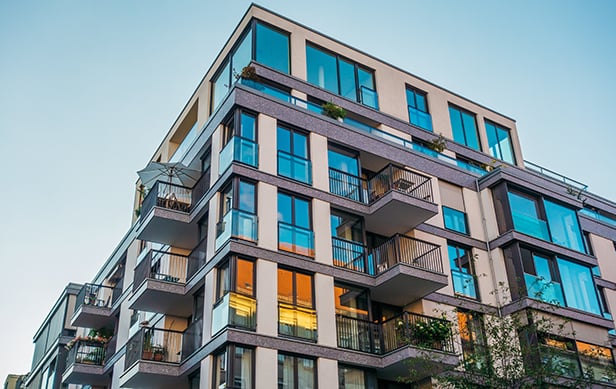GlobeSt.com: How much of your portfolio is green?
Schwartz: If you define green as being more energy-efficient, as reducing greenhouse gas emissions beyond what is normal, I would argue that 100% of our development would classify as sustainable. In every country where we develop--all 22--we build to a higher standard than the average building in that market, and with that comes significantly higher energy efficiency. An airtight building with less leakage of heating or air conditioning is an easy way to save massive amounts of energy and, of course, greenhouse gas emissions. It's a little more expensive to build a higher-quality building, but we are building a long-term sustainability business on a global platform. That has to start with a more sustainable footprint, even before you get to the other things that people think are a lot sexier and more exotic--solar panels or wind turbines---all of which we do.
GlobeSt.com: Is it more problematic to build green in warehouse/distribution than in other property classes?
Schwartz: The opportunities are greater. You're talking about greater surface and roof areas. When we build a million-sf distribution facility, the amount of roof area we have in relation to a million-sf office building is 40 to 50 times as much, so we have 40 to 50 times the opportunity, with high-reflective roofing materials, to create energy efficiency. We own in excess of 450 million sf of rooftops around the world, so I would argue that we control more solar-panel space on roofs than any private owner on a global basis, and more opportunity for power generation from our roofs than any other product class.
GlobeSt.com: Is there something in the mere configuration of the open span that provides--to use your words--more opportunity?
Schwartz: Yes, the lighting systems. Again. We've been converting to energy-efficient florescent lighting, and we've converted more than five million sf in North America since the beginning of '06. And all our new buildings have it. This could cut lighting costs by 60% to 80%. It's huge.
GlobeSt.com: Certainly retrofit is easier than in a multi-tenant office building.
Schwartz: I guess. You don't have any recessed lighting or other expensive lighting features. Everyone here is looking for efficiency, which is what I like about our business; it's all about productivity and efficiency, not glamour. It's why we have buildings that are 20 or 30 years old still leasing for 90% or 95% of a brand new building. There's almost no functional obsolescence.
GlobeSt.com: Is there an age past which it no longer makes sense to retrofit?
Schwartz: No, as long as the building is functional. In the office sector, a 20-year-old building has to compete against newer assets with more marble and a nicer fountain. With a good, functional 20-year-old logistics facility, you might put on a new roof and paint it once or twice, but as long as it was designed right in the first place, you'll get a rent that is 90% of what you'd get for a new building.
GlobeSt.com: We keep hearing that office tenants are asking for green. What about your clients?
Schwartz: Even more so. We work with more than half of the global 1,000 companies, and the best have their own sustainability initiatives. If you can help a GE or Unilever or BMW further their own sustainability initiatives by giving them a better, more sustainable distribution facility, it puts you ahead of the competition.
GlobeSt.com: Are they asking for specific requirements?
Schwartz: Absolutely, and we're seeing build-to-suits today where they're willing to pay a premium to create a more energy-efficient building.
GlobeSt.com: What kind of premium?
Schwartz: It depends on what they want. It could be 5% or 10% of building cost. But there's a payback on all of that and they're reasonable. With some of the newest computer-operated lighting systems we're installing you can see a three-to-four-year payback.
GlobeSt.com: Are the promoted costs of building green--we've heard as low as 3%--realistic?
Schwartz: It depends on how green you go. You can spend a lot more money than that. We have carbon-eating pavement technology we use in Japan. It works. We use it because we do multi-story, close-in urban buildings in Tokyo and Osaka. We use it right at the dock door where trucks will sit and idle. It absorbs the carbon, which runs off with the rainwater. It's on the order of $100 per sf. That's why we use it so sparingly.
GlobeSt.com: You've said that, while solar panels have come down about 90% in price, they're still expensive enough to warrant subsidies. Who's doing the subsidizing?
Schwartz: Governments. We're doing it in Spain, Germany and France. They guarantee you a price for the power you generate that's a premium over what they normally pay for a conventional source of power, and that allows you a decent return. A typical return, without a subsidy, would be south of 4%. We've got it to about 8%. There's nothing superb about that, but it's acceptable because you're doing good at the same time.
GlobeSt.com: Are we doing anything like it here?
Schwartz: They should, but now it's taking place just in California.
GlobeSt.com: How do we stack up against other nations in terms of sustainability initiatives?
Schwartz: We're in the minor leagues. Let's start with Europe. The EU is light years ahead of us in reducing carbon emissions and putting in place incentives and rules concerning sustainability. European companies, for the most part, are ahead of US companies in thinking this through and making it an initiative. But I'm shocked at how fast it's happening in the US. Europe has been talking about it for four years, and now, because of a documentary movie and some severe weather related disasters, people here are realizing that the problem is real and needs to be taken seriously.
GlobeSt.com: And Asia?
Schwartz: Japan is very progressive in its thinking--on the order of Europe. China is starting a major initiative. In their new five-year plan, there is a major push for energy efficiency--through mass transportation, building standards and the creation of nuclear plants. It's hugely expensive. But the Chinese get it and they're catching on. I'm comfortable they're going to move very rapidly in this area.
GlobeSt.com: How long will it be before the US catches up?
Schwartz: We need a cohesive national energy policy. I keep my fingers crossed that we have enough forward-thinking leaders in Washington to put that together in a short period of time. From a global competitive standpoint we need to do it.
GlobeSt.com: And what's your faith quotient?
Schwartz: Not as high as I'd like it to be.
GlobeSt.com: What's the outlook for ProLogis?
Schwartz: This is a rare opportunity to do good and do well at the same time. I know we're creating shareholder value as a result of strengthening our relationships with our customers and the amount of business we are winning with customers who have their own initiatives to become sustainable. It's become a big business driver for us.
GlobeSt.com: Can you quantify that?
Schwartz: I could go through a number of build-to-suits for which we were selected because of our sustainable technology and expertise. People aren't going to pay a huge premium over their core requirement. But if you can be price-competitive and provide them a more sustainable product, it's an easy decision.
© 2025 ALM Global, LLC, All Rights Reserved. Request academic re-use from www.copyright.com. All other uses, submit a request to [email protected]. For more information visit Asset & Logo Licensing.








